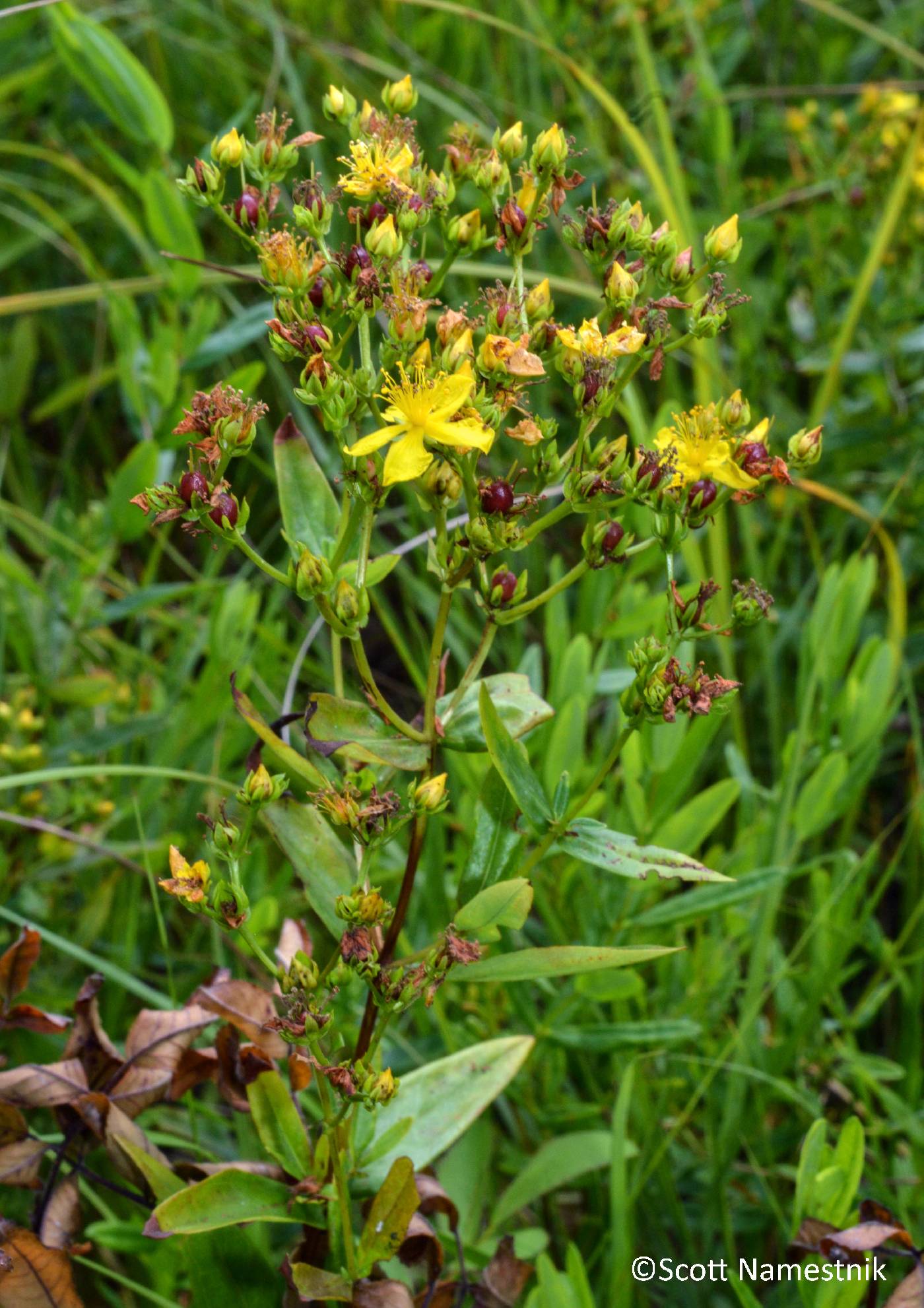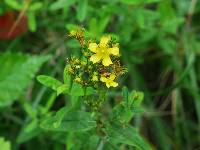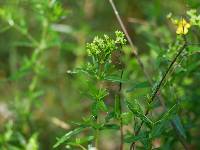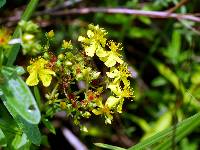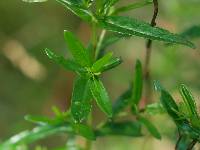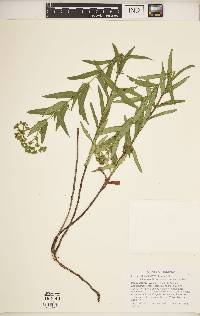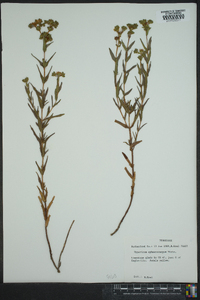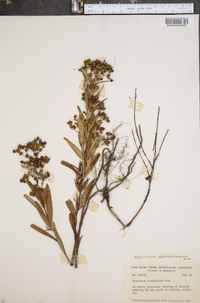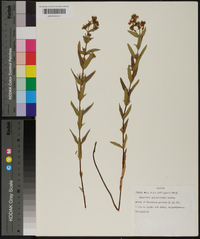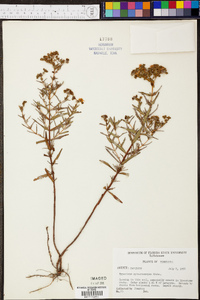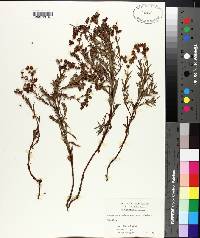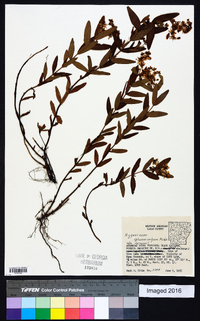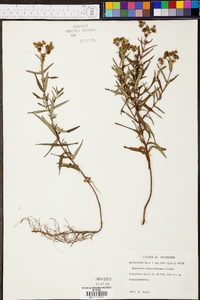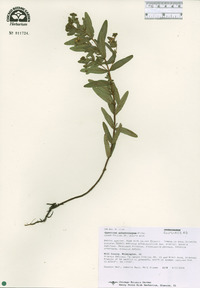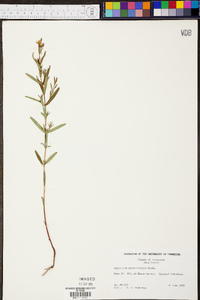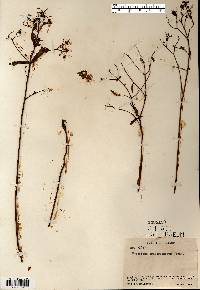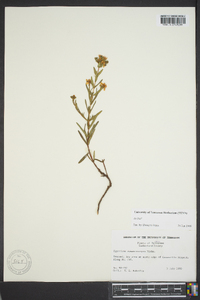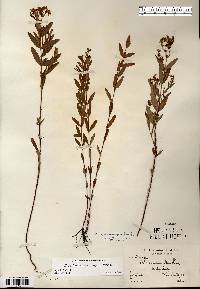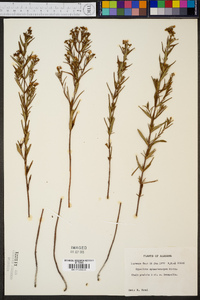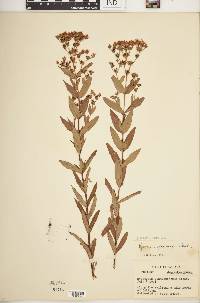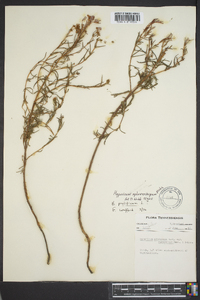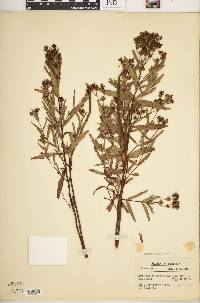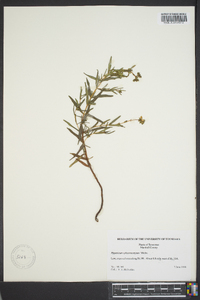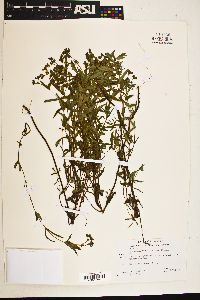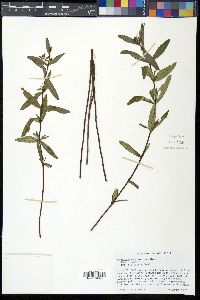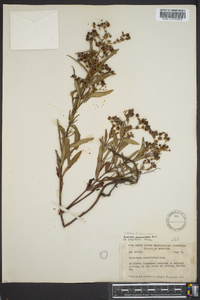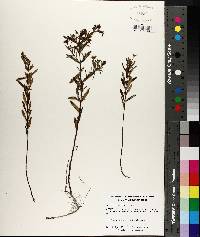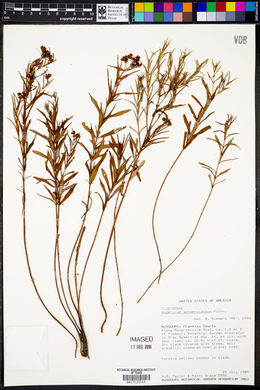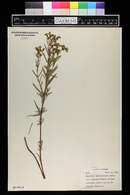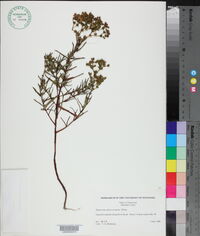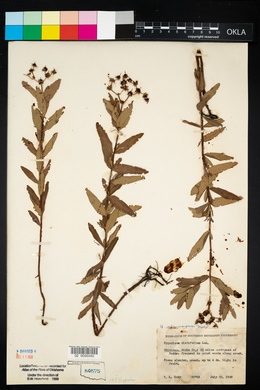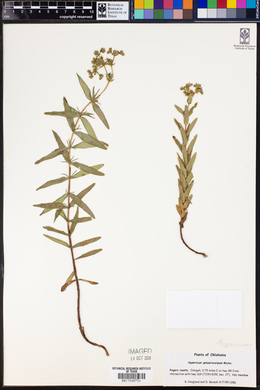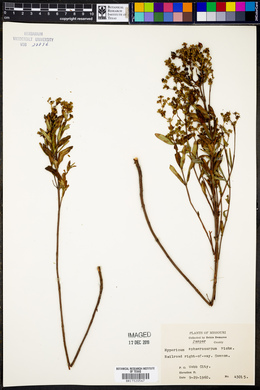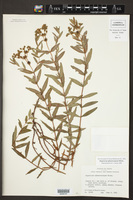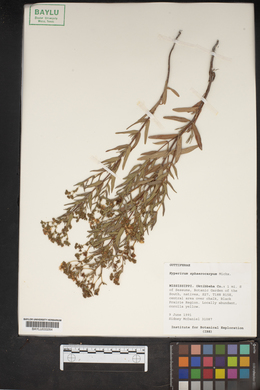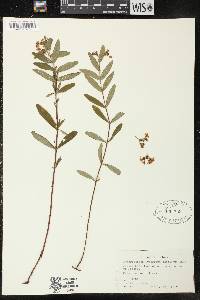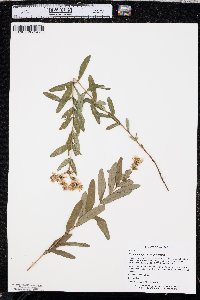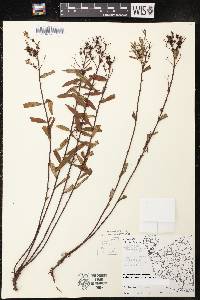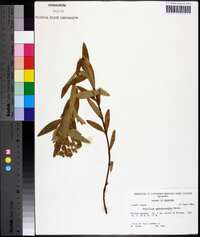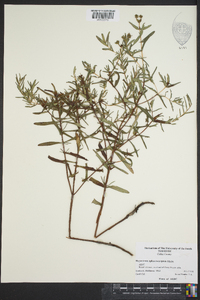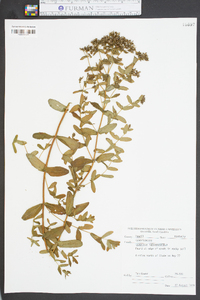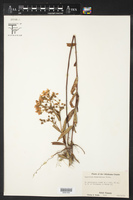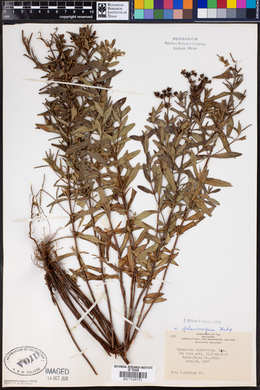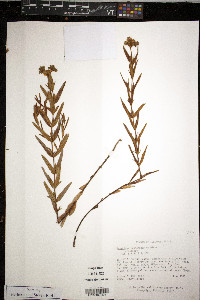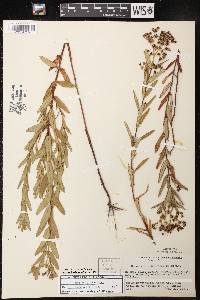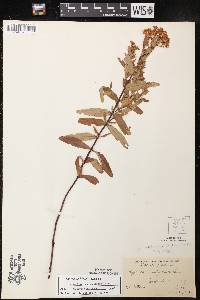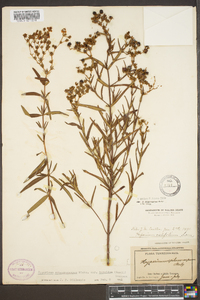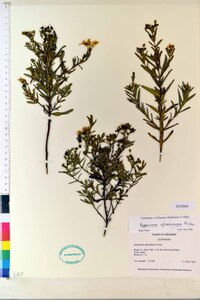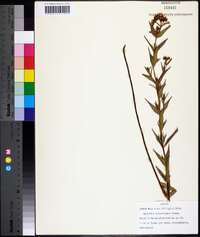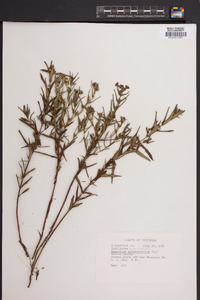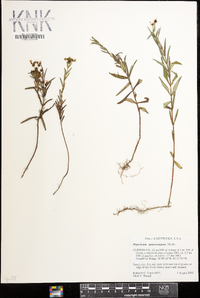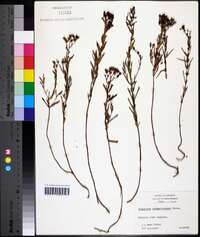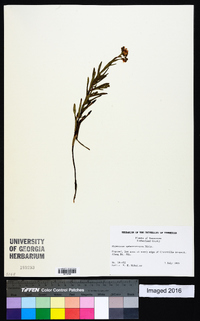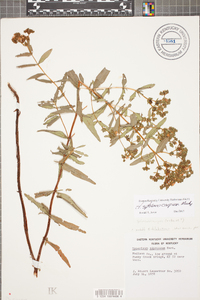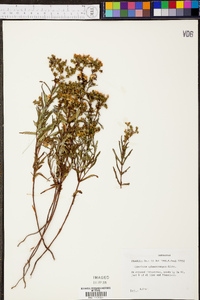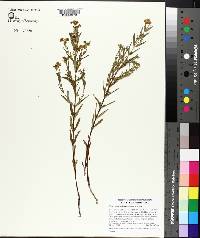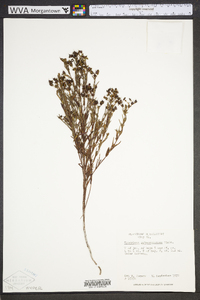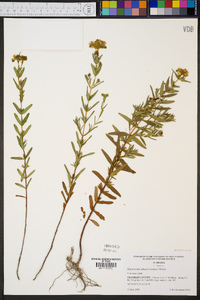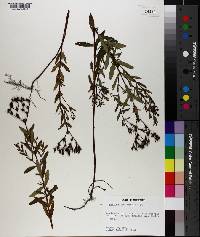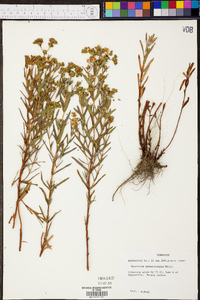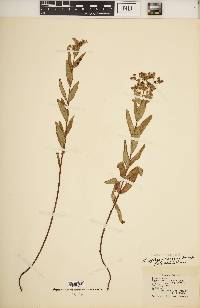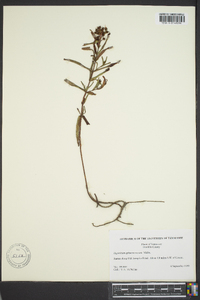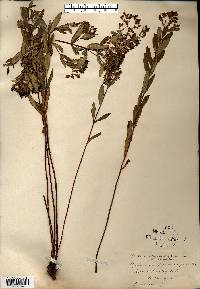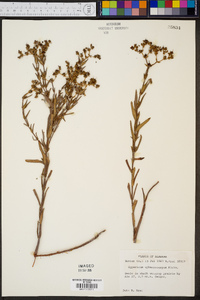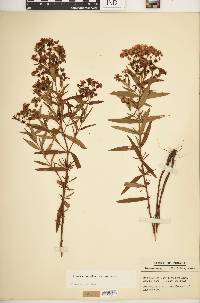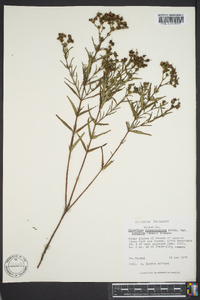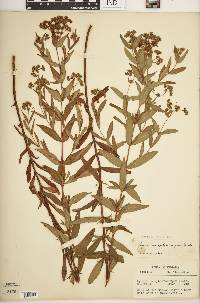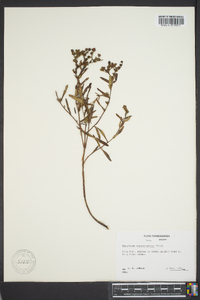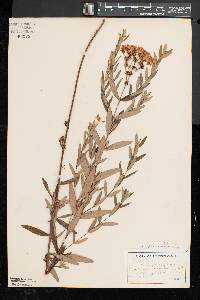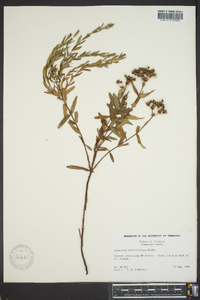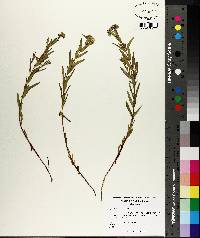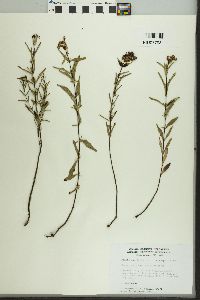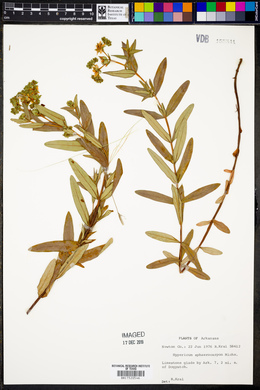
|
|
|
|
Family: Hypericaceae
Round-Seed St. John's-Wort
[Brathydium sphaerocarpum (Michx.) Spach] |
Perennial subshrub or herb 30 cm - 0.7 m tall Stem: often clustered, becoming woody toward the base. Leaves: opposite, stalkless, 3 - 7 cm long, 0.5 - 1.5 cm wide, narrow oblong to narrow elliptic with a tapered base and pointed to rounded or blunt tip, non-toothed. Flowers: borne in a highly branched and compact inflorescences, subtended by lance-shaped bracts, with 2.5 - 5 mm long and lance- to egg-shaped sepals, five yellow petals 5 - 9 mm long, 45 to 85 stamens, and three united styles separating at the tip. Fruit: a one-chambered capsule, 5 - 7 mm long, spherical to egg-shaped, beaked, containing many 2 - 2.7 mm long seeds. Similar species: Hypericum adpressum, Hypericum ascyron, Hypericum perforatum, Hypericum punctatum, and Hypericum sphaerocarpum have more than 30 stamens per flower. Hypericum adpressum is distinguished because it is 30 cm - 0.8 m tall, the stems are usually unbranched below the inflorescence, the leaves are linear-oblong to narrow elliptic and curl under slightly, the flowers are less than 3 cm wide with 45 to 85 stamens and three styles that are attached for most of their length, and the capsules are less than 1 cm long and are beaked at the tip. Hypericum ascyron is 0.7 - 1.5 m tall, the leaves sometimes clasp around the stems, the flowers are 4 - 6 cm wide with 12 - 22 mm long petals, five styles, and numerous stamens, and the capsules are 1.5 - 3 cm long and lack a beak. Hypericum perforatum has highly branched stems, usually less than 1 cm wide leaves with the midrib continuing down the stem as a sharp ridge, sepals lacking or with few black glands, petals having black glands concentrated along the margins, 50 to 80 stamens, and rough seeds that are 1 - 1.3 mm long. Hypericum punctatum differs because it has non-angled and black-spotted stems with little branching below the inflorescence, its leaves are over 1 cm wide and covered with black dots, the flowers have sepals and petals covered with black dots and 30 to 60 stamens, and the seeds are nearly or entirely smooth and less than 1 mm long. Flowering: mid June to late August Habitat and ecology: Most common in the southwestern part of the Chicago Region, this species grows in disturbed and calcareous rocky prairie remnants. Occurence in the Chicago region: native Etymology: Hypericum is the Greek name for St. John's Wort, which blooms around St. John's Day (June 24). Sphaerocarpum means "with round fruits." Author: The Morton Arboretum Erect perennial 3-7 dm, somewhat woody below, often rhizomatous but the stems clustered; lvs linear-oblong to narrowly elliptic, 3-7 cm נ5-15 mm, with or without evident lateral veins, acute or obtuse, tapering to the base; infl much-branched and usually compact; bracts lanceolate; sep lanceolate to ovate, equal or nearly so, 2.5-5 mm; pet 5-9 mm; stamens 45-85; stigmas 3(4), minute; fr globose to ovoid, 5-7 mm, slender-beaked, strictly unilocular; seeds 2-2.7 mm. Upland woods, prairies, and barrens; O. and Ky. to Io., Kans., and Okla., s. to Ala. and Ark. June-Aug. (H. cistifolium, misapplied) Gleason, Henry A. & Cronquist, Arthur J. 1991. Manual of vascular plants of northeastern United States and adjacent Canada. lxxv + 910 pp. ©The New York Botanical Garden. All rights reserved. Used by permission. From Flora of Indiana (1940) by Charles C. Deam Alluvial and rocky, wooded banks of streams and in sandy soil along roadsides and in prairies. Infrequent. It is apparently absent about Lake Michigan and in the northern counties. ...... Indiana Coefficient of Conservatism: C = 7 Wetland Indicator Status: FACU |

